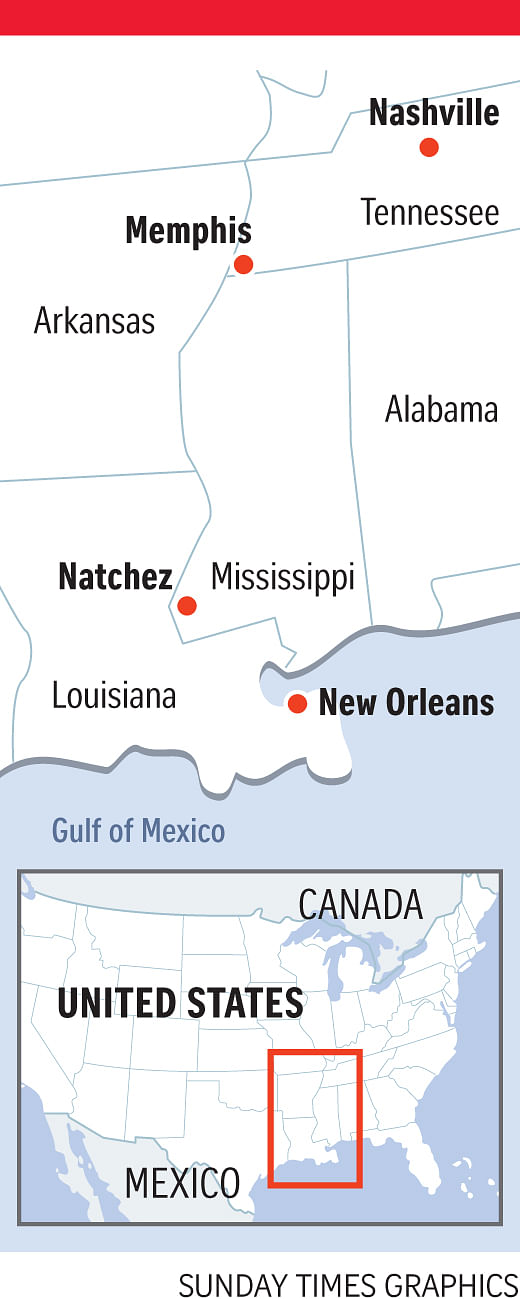-
Getting there
-
I fly on United Airlines (www.united.com) from Singapore to Chicago. From Chicago, I fly to Nashville, the starting point of the Southern Grace tour organised by Insight Vacations.
For more information, e-mail info@ insightvacations.com.sg, call 6922 5950 or go to www.insightvacations.com/asia.
Visiting the American South - birthplace of Elvis Presley and jazz
From Elvis Presley to country to blues, music is core to the heritage of the US South. Civil rights and slavery are also integral to the region's history
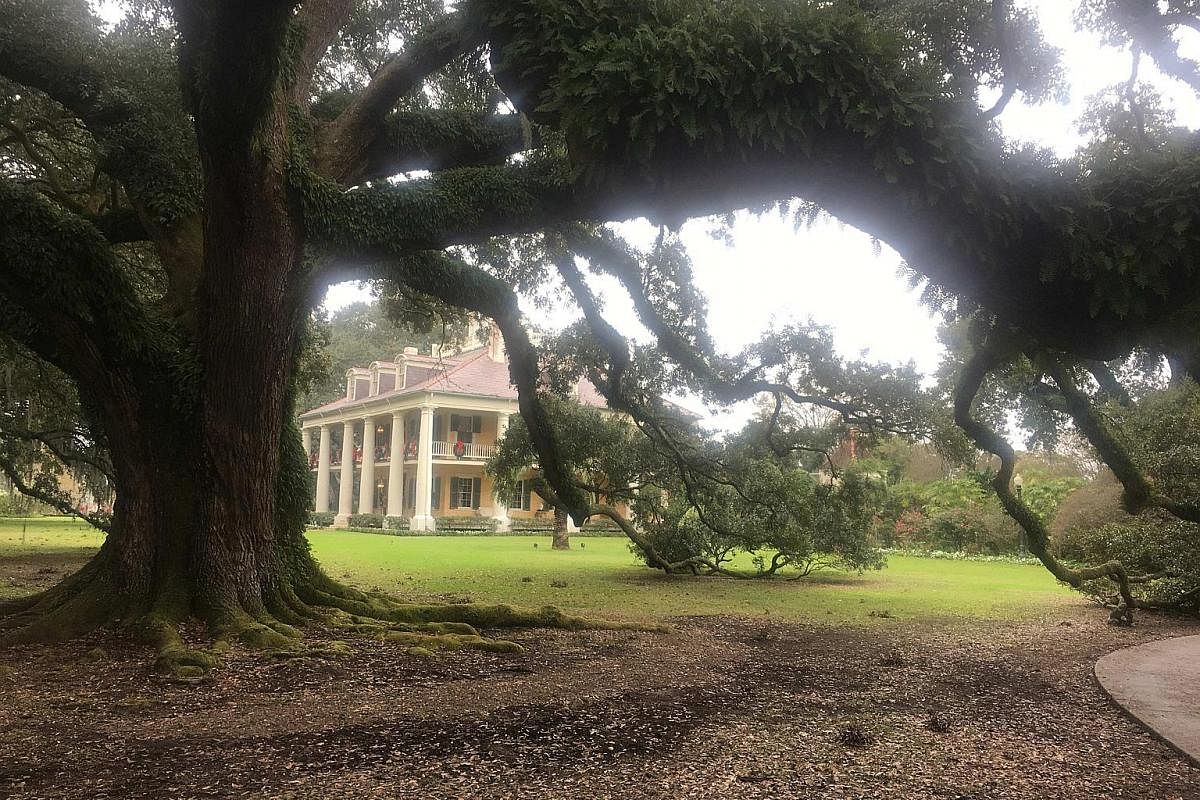
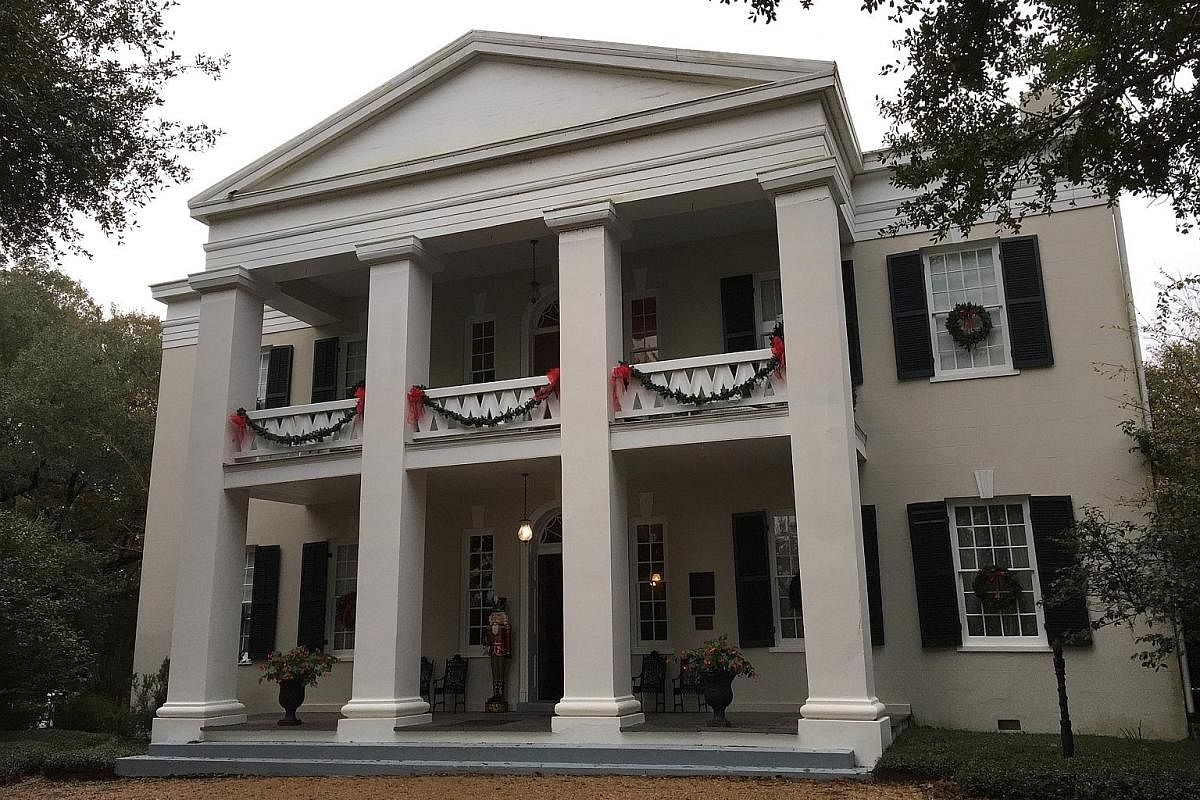
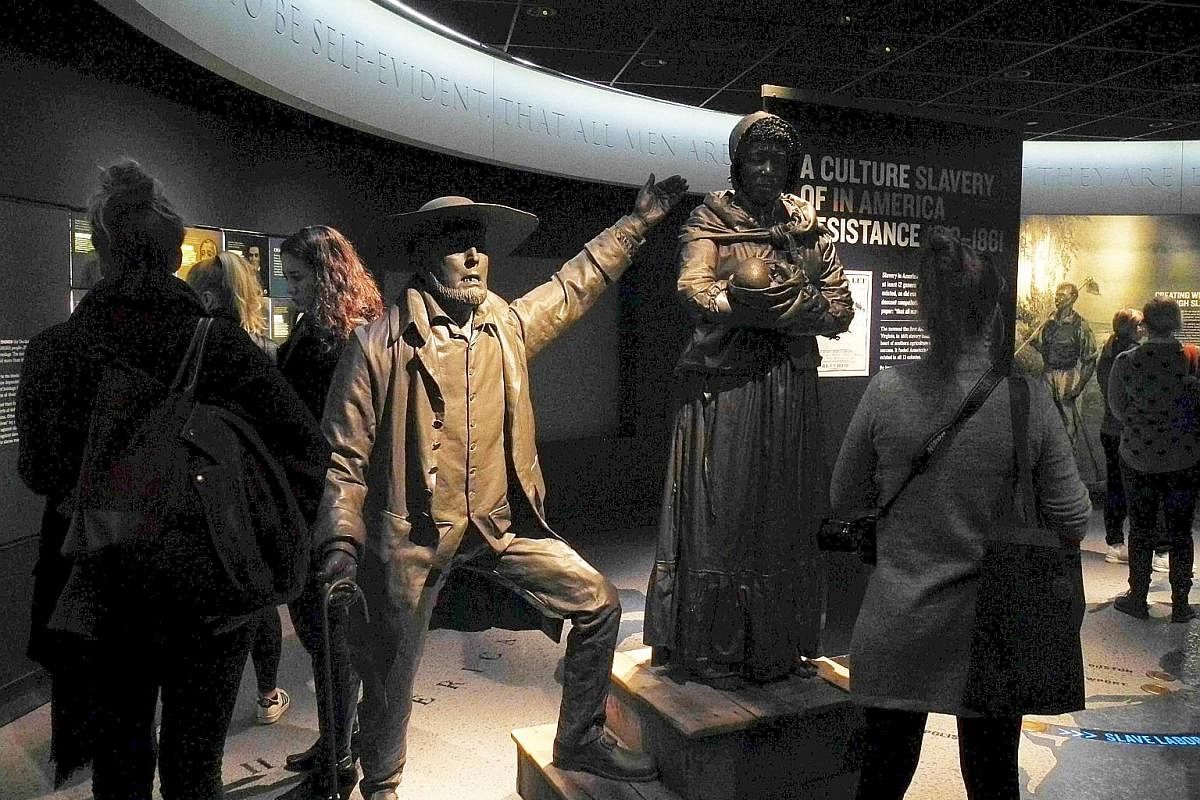
When your job is to take tourists around Graceland, Elvis Presley's fabled home in Memphis, Tennessee, it pays to be comfortable. This is why Mr George Klein, 81, a lifelong pal of Presley and a member of The King's posse, sports a midnight-blue velour tracksuit.
He points out a piano in a parlour and says: "That's where he and Jerry Lee Lewis had jam sessions. They'd try to sing the other person's songs."
The senior has no problem with the narrow stairs. His eyes light up and the years fall away when he talks about things kept off the official website of Graceland (graceland.com).
"Elvis was awake nights. He slept in the day. He'd call down to the cooks to make something for him. He liked steaks, fried chicken, Southern food. He hated fish, he hated the smell of beer."
No alcohol passed his lips and liquor was allowed in his home only on special occasions.
Mr Klein makes no mention of the signature Presley favourite: fried peanut butter and banana sandwiches.
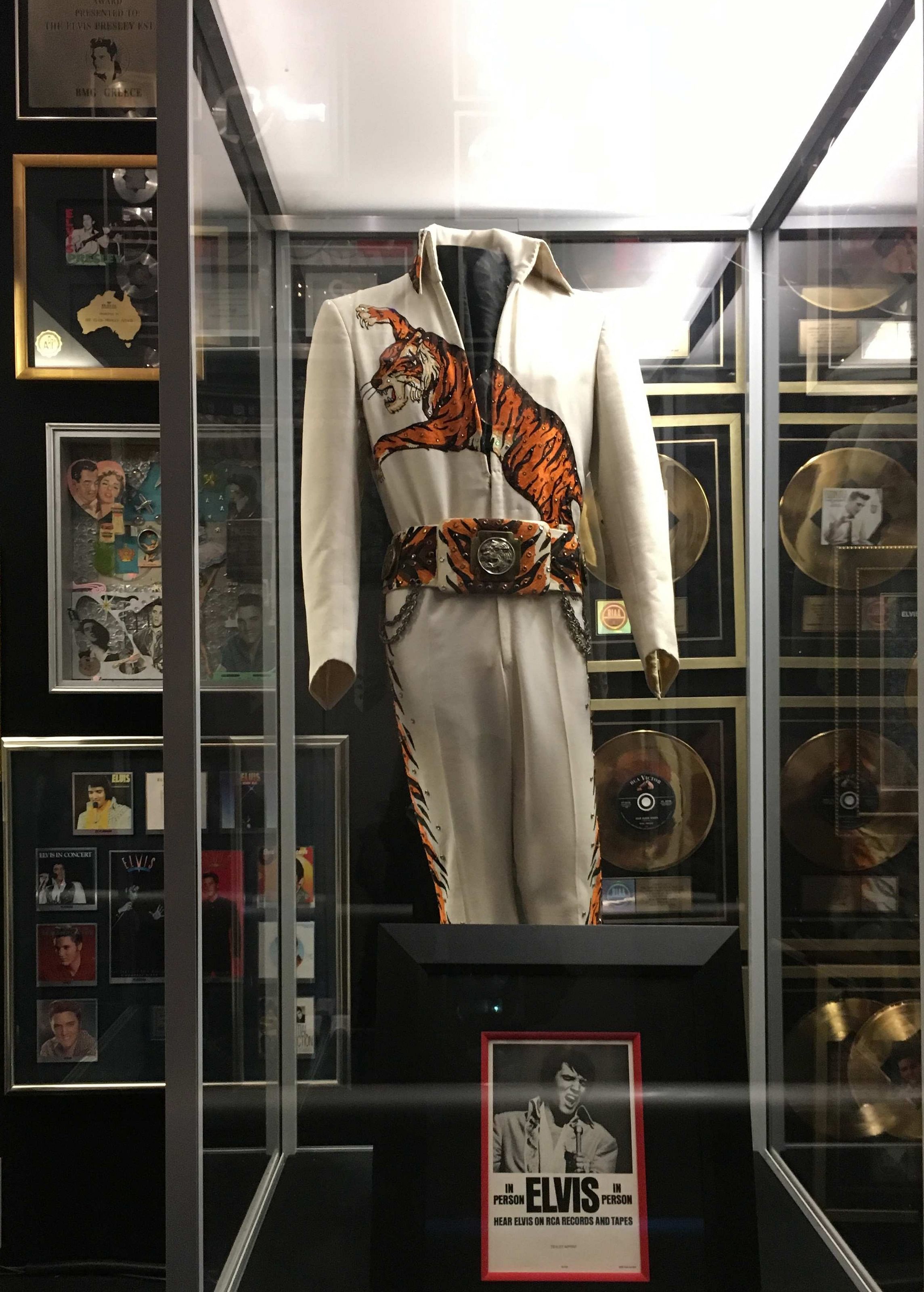
But later in the tour, these treats are served - along with a platter of smoky ribs - in the adjoining museum dedicated to the formidable Presley car and motorcycle collection.
The singer died in 1977 at age 42 and, last December, ahead of the 40th anniversary of his death this year, we looked in awe at the Yellow Room, with its groovy cushions, 1960s futurism and three television sets. This was where he threw parties.
"He wanted three TVs because he saw that President Eisenhower had three TVs, one for each network," says Mr Klein. Dwight Eisenhower was United States president from 1953 to 1961.
Mr Klein points to a small, nondescript door to the side of the Yellow Room. It leads to a bedroom where partygoers could find privacy. He mentions PG13-rated tidbits about Presley's romance with actress Ann-Margret.
Details such as these are why tours book Mr Klein. When he is not deejaying at an all-Presley radio station, he speaks at Presley fan meet-ups around the world.
"I'm tellin' you stuff they don't tell you on the official tour," he says.
He met the singer in 1948, at high school in Memphis. Presley volunteered to sing at a talent show.
"That's when I thought, 'He's got something.'"
As a place of pilgrimage for thousands every year, Graceland's got something too. So do two other Presley locales: RCA Studio B in Nashville, where he recorded It's Now Or Never and other hits; and Sun Studio in Memphis, where the delivery driver paid US$3.98 to cut a record as a gift for his mother and was discovered by producer Sam Phillips in 1954.
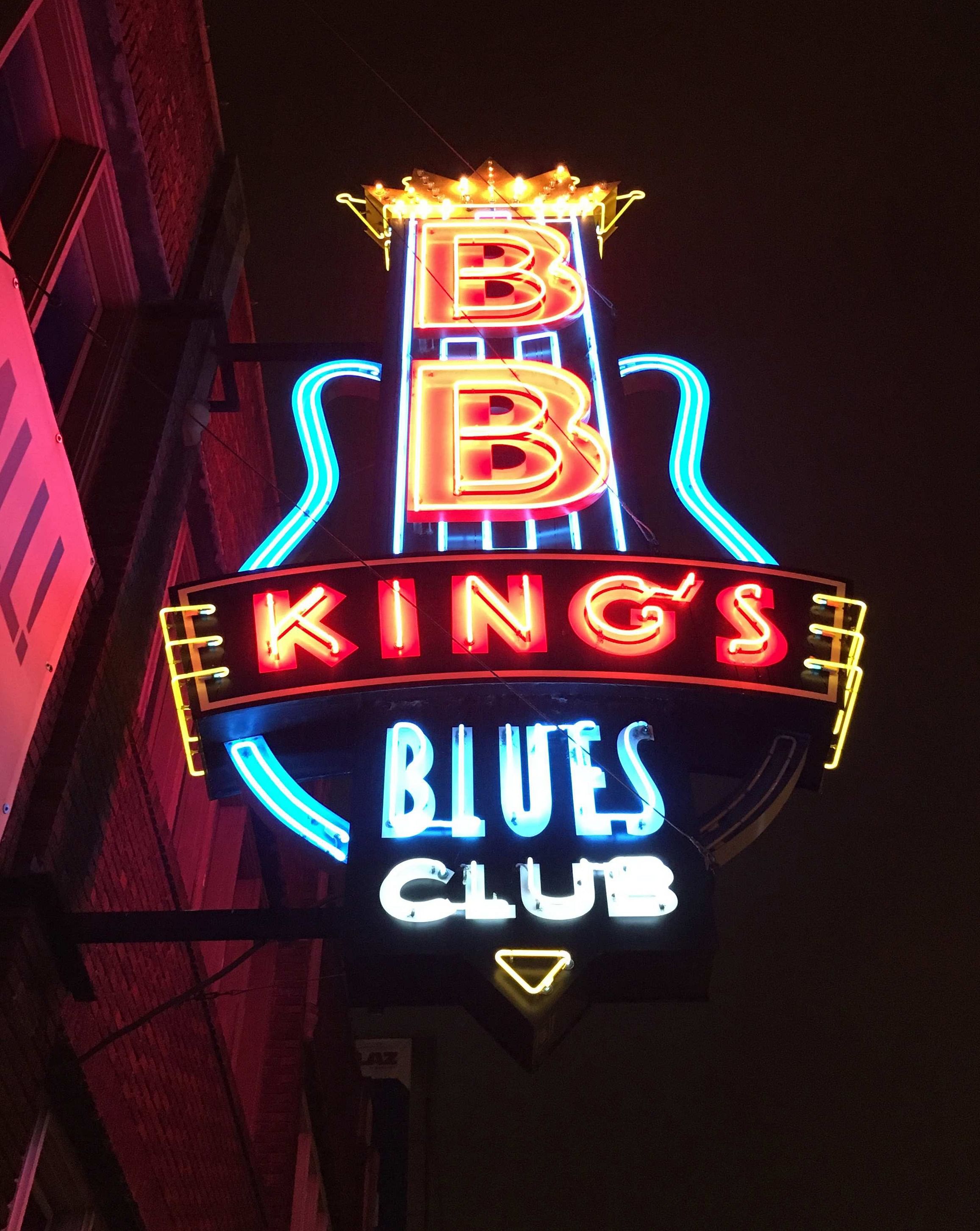
Our eight-day bus tour, called Southern Grace and organised by Insight Vacations (www.insightvacations.com/asia), begins in Nashville, Tennessee, today known for being the home of country music and for its highest temple, the concert hall that used to host the Grand Ole Opry music show.
Our tour bus moves through Nashville's tidy streets, down Music Row, where the studios are located and stops at RCA Studios, opened in 1957 by producer and virtuoso guitarist Chet Atkins.
Atkins was on a mission to take country music into the mainstream. He dropped the fiddles and banjos and added strings and marimbas to the songs of stars such as Jim Reeves. So influential was the producer, according to guest relations specialist Greg Miller, that Atkins "took country so far uptown it never came back down".
Here, in Studio B, cluttered with vintage instruments (that guests are advised to not touch) is where Presley covered 240 songs, or half his catalogue. Like Graceland and Sun Studio, Studio B (studiob.org) is a must-visit on any proper Presley pilgrimage.
For a fee, groups can sing a Presley tune, karaoke-style, and have a memento CD made. Our group does a passable version of Can't Help Falling In Love.
The bus takes us to the Country Music Hall Of Fame and Museum (countrymusichalloffame.org). I am not a fan of country music, but it is worth a visit for its astounding collection of stage costumes. As the song goes, rhinestones are a singin' cowboy's best friend and the museum has enough stones and other shiny objects to fill a wagon.
We are treated to a concert by a local celebrity at the museum. We file into a small hall to see songwriter Richard Leigh, who penned the platinum-selling Don't It Make My Brown Eyes Blue for singer Crystal Gayle.
Leigh sings it himself, quite beautifully. He performs a handful of his other hits and takes questions. I ask him which comes first to him during songwriting, the melody or the lyrics?
"The mortgage," he says.
We bus on to another shrine to country music, the Ryman Auditorium (ryman.com), built in 1892 as a concert venue. From 1943 to 1974, the gorgeous wooden structure hosted the Grand Ole Opry, the nation's longest-running radio show. The Saturday night show now emanates from a new hall, but the Ryman is still in use as a performance space and, that night, we attend a country show there.
Next stop: Memphis, Tennessee. It is where, in 1968, civil rights leader Martin Luther King Jr was shot and killed by a sniper at the Lorraine Motel. The National Civil Rights Museum (civilrightsmuseum.org) has been built around the motel.
Our guide, Mr Roy Logan, 71, takes us through the exhibits. The multi-sensory experience, which includes a diorama of a slave ship, reveals how blacks in the US, especially in the South, rarely earned their rights because whites were suddenly enlightened. Rather, those freedoms were gained only after confrontation and struggle, often at the cost of the lives of black protesters and white allies.
It is only in retrospect, decades later, that most people view the old Southern caste practices to be obviously unjust.
Mr Logan's passion when speaking of the struggle makes the exhibits come alive.
The retired teacher, who is black, talks about his own experiences. He says he was awakened to injustice in 1955 when he learnt of how a 14-year-old Mississippi boy, Emmett Till, was lynched for allegedly flirting with a white woman. "I was the same age as him. I grew up in Memphis. Later, when I got a car, people told me never to go to Mississippi," he says.
Memphis is also home to blues music and its famed Beale Street area downtown is filled with dozens of bars with live bands. A place that attracts great musicians is B.B. King's Blues Club (bbkings.com/memphis), where you are as likely to hear soul and funk as blues.
It also serves diners upstairs, with a menu specialising in local cuisine: slow-cooked ribs, beef brisket, pulled pork and, of course, fried chicken.
For lunch, I eat crunchy, spicy fried chicken, washed down with a cup of orange soft drink, at Gus's World Famous (gusfriedchicken.com), a restaurant launched 60 years ago in Tennessee, which has now become a chain in the South and West.
Memphis is ranked among the most crime-ridden areas in the US. The group's hotel, the Westin Memphis Beale Street (www.westinmemphisbealestreet.com), is just around the corner from the party zone, so walking to the bars is fairly safe if done in groups. At night, the police are out in force on Beale Street.
Presley-heads should visit the legendary Sun Studio (sunstudio.com), which bills itself as "the birthplace of rock 'n' roll". Like Studio B in Nashville, Sun is a working studio which sets aside time for tours. Here is where much of the original gear from the 1950s has been preserved.
Guide Nina Jones, 22, lets our group touch and pose with the microphone used by Presley, Jerry Lee Lewis, Carl Perkins and Johnny Cash. Hip-swivelling and helicopter arms are optional.
No tour of the South should exclude touching on its most distinct historical trait: slavery.
Located close to the Mississippi River, in Louisiana, Frogmore (frogmoreplantation.com) is a working cotton plantation, a 728ha thriving business with the big machines needed to raise the crop that, more than anything else, made the South the South.
Frogmore is unique in that the farm's 1800s slave row is mostly intact. Its owner and guide, Ms Lynette Tanner, walks our group through the wooden buildings. It housed 58 families, mostly of black slaves and a few white overseers.
The household goods preserved there tell the story of cotton, slavery and the Civil War. They also speak of clothes, worship, marriages, music and food - the stuff that daily life is made of, for both slaves and their masters.
Ms Tanner talks about the 2013 movie 12 Years A Slave and the scene in which one slave is whipped for bringing in an underweight sack. She shows us the sack.
"Each slave had to bring in 75 pounds (34kg) of cotton, four times a day," she says.
The cotton and sugar trades that flourished on the back of forced labour gave rise to a mercantile class who would build opulent homes known in local slang as "sugar palaces". Our tour makes a stop at one of the most well-preserved, Houmas House (houmashouse.com).
In its ornate rooms and lush gardens, we take in a lot of history as well as the mildly eccentric decor style of its current owner, industrialist Kevin Kelly.
Another home of note is Monmouth Historic Inn and Gardens (monmouthhistoricinn.com) in Natchez, Mississippi. In this stately manse-turned-hotel, our group stays one night, some of us in the main building (built in 1818) and others in the more recently built cottages, decorated in 19th-century style.
If walls could speak, Monmouth's would speak of antebellum wealth, easy living for its owner thanks to slaves, and family fortunes plunging after the South lost the Civil War.
The walls might mention former slaves returning to work as paid staff, post-war, and of its falling to rot in the 20th century before new owners, in the 1970s, began a restoration to get it to its present magnificent state.
And, no, nobody on the bus says anything about seeing a Civil War ghost.
At the bar in Monmouth, bartender Roosevelt Owens demonstrates his version of the classic Southern cocktail, the mint julep. His trick is to sweeten the potent, refreshing cocktail - he uses Amaretto and Creme de Menthe - with honey, Sprite and sugar. He then serves it in a silver mug.
The next stop is New Orleans. A local guide hops on board our bus and gives a narrated tour of the city's high points before taking the bus to the place where history, lifestyle and religion come together: the cemetery.
At St Louis Cemetery No. 3, our guide Robbie uses the tombs - their heights, styles of ornament and sizes - to give a quick and engaging summary of the social history of the port city.
Tombs are built above ground because of the city's waterlogged soil, for example, and a family tomb can be used for many generations because when new bodies are put in, older ones are taken out and cremated.
At the New Orleans School of Cooking (neworleansschoolofcooking.com), chef Kevin Belton gives demonstrations for classic Creole dishes such as gumbo, a hearty soup with African origins.
He says the secret to gumbo is perfectly browned roux, or flour cooked in oil, a technique much trickier than it sounds. The other secret is file (pronounced fill-ay), ground dried sassafras leaves, for flavour, and like the roux, used for thickening.
Chef Belton advises us to go to Frenchman Street for good jazz, rather than stick to the French Quarter, where we are likely to get watered- down stuff. We opt to play it safe and have drinks at Fritzel's European Jazz Bar (fritzelsjazz.net) in the French Quarter. The band play good, competent ragtime and old-school stuff.
In the afternoon, we hop on the last operating paddlewheel steamboat on the Mississippi River, Steamboat Natchez (steamboatnatchez.com), for a leisurely ride, complete with a lunch buffet. The engine room is open to visitors and engineer Ken Howe is happy to talk about what it takes to keep the ancient machine running.
Dinner on the last night of the Southern Grace tour is at Arnaud's (arnaudsrestaurant.com), a fine-dining spot with jazz players roaming between tables.
It serves alligator sausage, oysters, gumbo and crab cakes. It is a lovely setting to top off a memorable trip - even if you are not a Presley fan.
• The writer was hosted by Insight Vacations
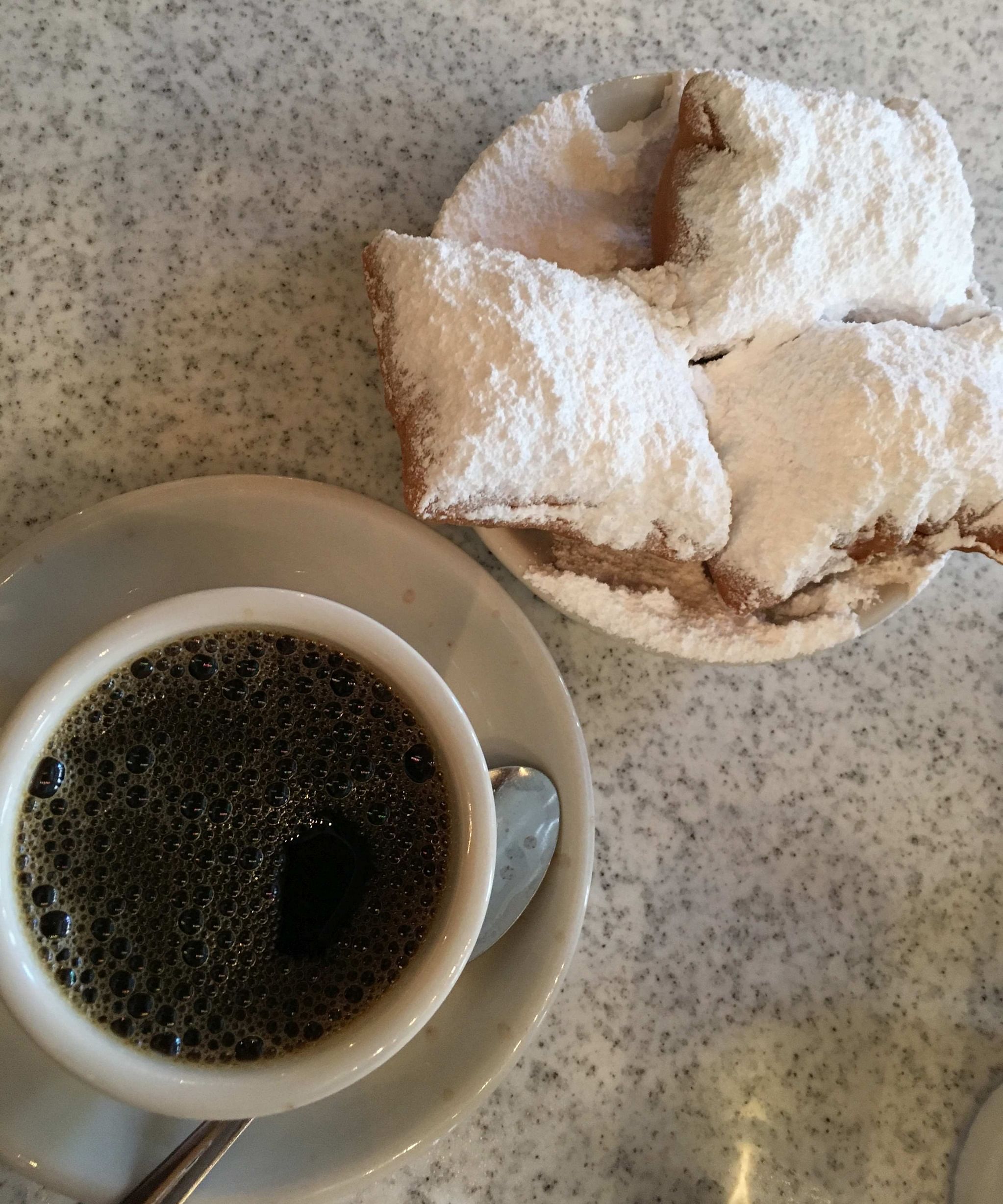
Five things to do in the South
1. In New Orleans, buy souvenirs at the French Market (frenchmarket.org). It is within walking distance of the famous French Quarter, but goods there are 20 per cent cheaper. Besides arts and crafts, there is a lively food scene here that includes the famous Cafe Du Monde, an institution where you can eat the local fritters called beignets (pictured), accompanied by a cafe au lait.
2. In New Orleans, pick up a copy of the tram routes at your hotel. Locals call the iconic trams "streetcars", as in the Tennessee Williams play, A Streetcar Named Desire. The play was named after the real cars that ran the route to Desire Street. Streetcars are cheap, costing as little as US$1.25 (S$1.75), and ply routes to most tourist areas (neworleansonline.com/tools/transportation).
3. Blues music might not exist if not for the guitar. If you are in Memphis for the blues, stop by the Gibson factory. The guitar manufacturer holds frequent one-hour tours of its production line (gibson.com/Gibson/Gibson-Tours.aspx).
4. In Memphis, try the barbecue at Central BBQ (cbqmemphis.com). The restaurant has three locations and many are fans of its ribs, chopped and pulled pork and beef brisket. The US$24.99 combo plate gets you the ribs and two other meats.
5. A wildlife boat tour of the Louisiana bayou in the winter months may net you a cold and not much else. This is the season when wetland critters hibernate, warm in their burrows. Those in our group spy not a single alligator. But our boat captain plans ahead and brings a hand-raised baby alligator for passengers to hold and take selfies with (airboatadventures.com).
Join ST's Telegram channel and get the latest breaking news delivered to you.
A version of this article appeared in the print edition of The Sunday Times on March 19, 2017, with the headline Visiting the American South - birthplace of Elvis Presley and jazz. Subscribe

